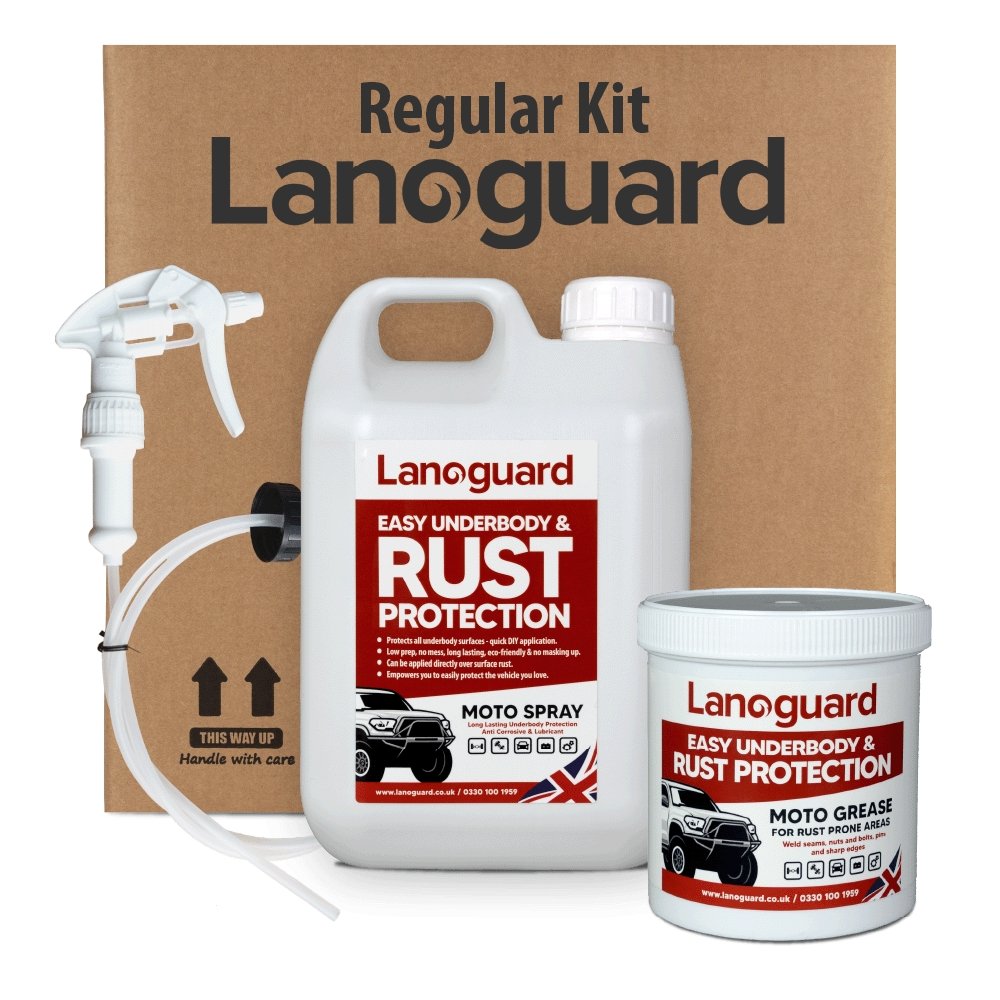Lanoguard is popular but it's *bloody* expensive and I've not seen any evidence that it is better than any of the cheaper, petrochemical based alternatives such as Waxoyl, Dinitrol, etc. They all work by depositing a waxy layer that then sort-of dries out and repels water and excludes oxygen. So far so good. Lanoguard happens to use lanolin, from sheep wool. Fine, but I've yet to see that it's any better at the job than the much cheaper Waxoyl, 5 litres for£40 while Lanoguard is £100+ for the same amount. Is it better? I have yet to be shown any evidence.
I'm unconvinced by any magical claims. One of the best solutions for prevention of corrosion is simply to slather the thing in grease. Yes, just standard bearing grease. It's a disgusting job, but I do know that I've slathered steel brake pipes in grease and it stops corrosion dead. MoT testers hate it because it makes their inspection job harder, but I don't much care about that if it saves me from having to replace the brake lines at £400+ after 10 years. You *could* do this under the whole car, but it's horrible. Similarly the old-school solution in the 70s and 80s was to spray old engine oil under the car. It works, but the underside of the car is then black and filthy, it stinks and you can't do any mechanical work without getting covered in it. Wax based solutions are cleaner, once dry they feel slightly tacky but the stuff doesn't come off on your hands.
A lot of it comes down to application level and time taken. I've seen them sold in aerosols, which is fine but by their nature aerosols don't contain a lot of solids. It's mostly solvent and I'm not interested in the solvent, that evaporates. I might also draw a distinction between the interior and exterior. Inside panels I'd be looking at things like Shell Ensis Fluid MD that actually meets a BS for metal protection (do the others?) or similar. Under the car I have yet to find anything better than boring old Waxoyl in the big cans, which I thin down with either white spirit or paraffin if I'm feeling tight. 50/50 gives a thin mixture that creeps well and dries out after a day or two. It smells pretty nasty for a week or two but that goes. As I say don't go for a wet drive when it's fresh, I once did and it all washed off. I use a paraffin gun and a compressor, poke the thing into cavities if I find them. It's not very scientific but I do reckon that lashing the stuff on regularly, say every year, without worrying too much, is more effective than slavishly doing it once and then considering it done. It does wash off underneath, and in cavities there's no harm in adding more and letting the solvent soften the existing stuff up again so that it can ooze into any gaps you may have missed last time. 5L is enough for several treatments, as I say Waxoyl has a fair bit of solid material in it so when thinned down it goes a fairly long way, you won't use more than 2L or so per treatment.



